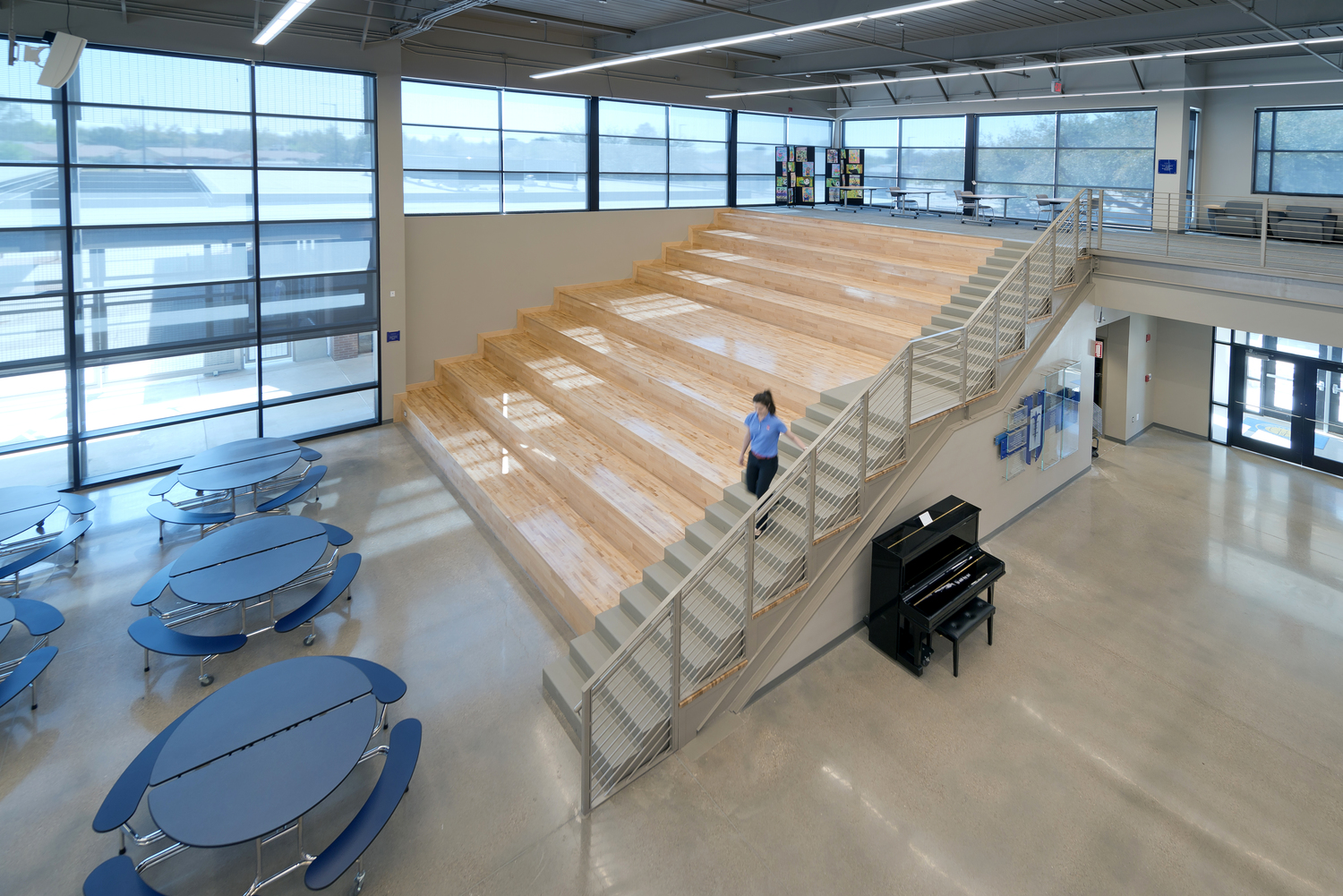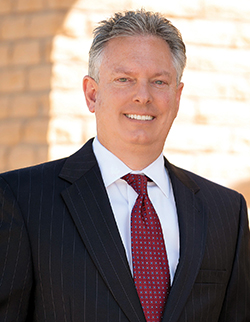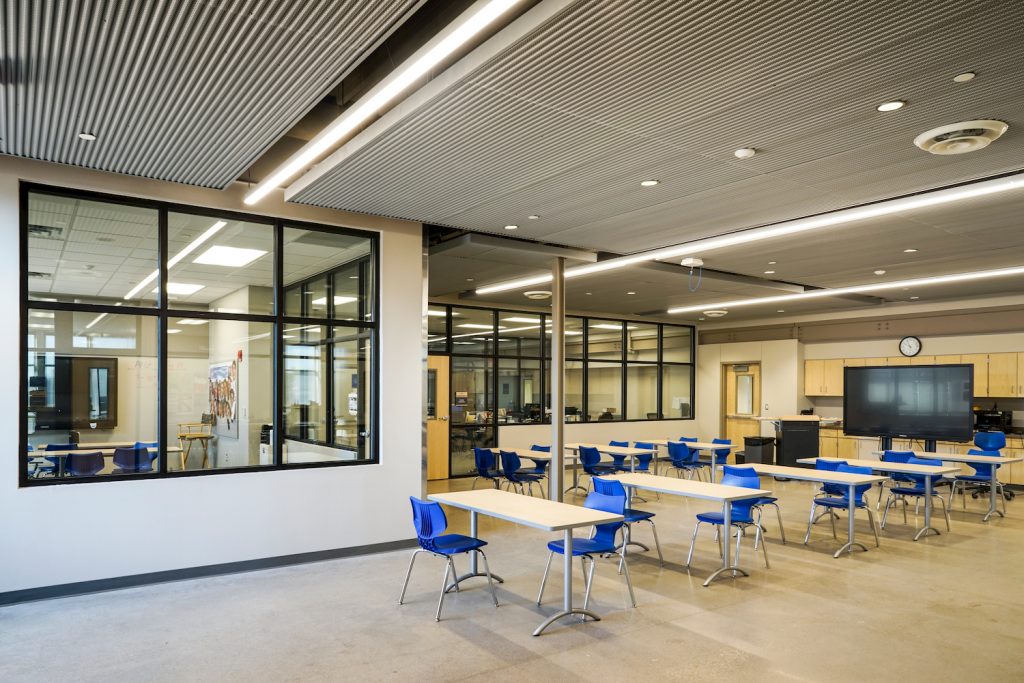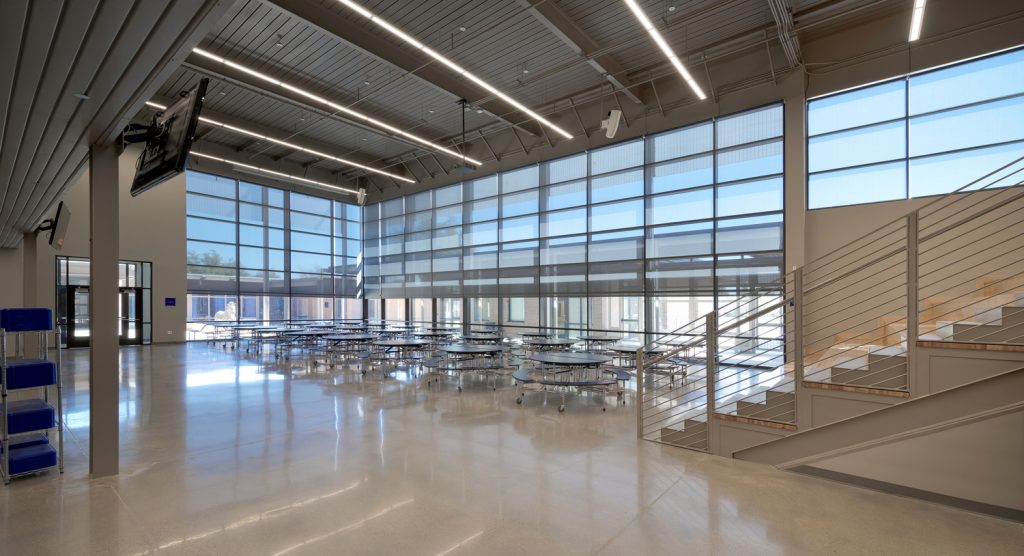
Designing a school is a specialized endeavor. Designing a Christian school? Even more so.
So, if starting a school is on your church’s horizon, you’ll appreciate the advice of these two knowledgeable architecture experts.

Principal, Director of Community Practice
Parkhill Smith & Cooper
Is your firm often enlisted to design Christian schools?
Scott Nelson: Parkhill, Smith & Cooper (PSC) serves as a ministry partner for both churches and schools across the country! With more than seven decades of experience in serving K-12 education, PSC is ranked nationally among architecture and engineering
firms as one of the leading providers of education facilities.
This expertise with K-12 education extends globally, including our work in Cuba, Puerto Rico, Japan, Italy and Germany with the Department of Defense Educational Activity (DoDEA) in developing school facilities on military installations.
Designing K-12 education spaces seems to be a highly specialized endeavor. How has your firm built up its expertise?
Mike Baker: Recognizing the need for specialized design expertise, PSC clusters its design professionals into sectors of expertise, including: churches, K-12 education, higher education and healthcare. Our K-12 education sector is comprised of design professionals that exclusively plan and design educational facilities, allowing them to develop a robust understanding of the needs of today’s schools. Through an internal research initiative, PSC’s K-12 sector created its own education research initiative —School of the Future through Intelligent Architecture (SoFIA). Each sector member was tasked to research and present to the rest of the Sector a subject relative to future education trends, sustainable materials, construction methods, and so on.

Principal, Director of Design — K-12 Education
Parkhill Smith & Cooper
PSC has further developed this expertise after being selected — along with seven other nationally recognized K-12 A/E firms — to participate in rewriting the Department of Defense Education Activity’s (DoDEA) education specifications to incorporate 21st Century Education principles, in preparation of their $4-billion school replacement program. Through this process, PSC’s architects, engineers and interior designers gained deep expertise and credibility, and have become thought leaders in how a school’s architecture must respond to promote collaborative learning and teaching, project-based learning, and allowing the educators flexibility in responding to the various learning styles students possess.
Can your firm be helpful in helping a church decide if a Christian school is right for them?
 Nelson: In our experience working with Christian Schools, the decision to open the school seems to be as varied as the schools themselves. Often, the creation of a Christian school is the result of a pastor or church family’s vision to see their faith shape their child’s education. Additional families begin to share this vision and create critical mass that brings the vision of a Christian school into reality. As such, the decision to open a school begins with a ‘Kingdom vision’ combined with ‘strategic resources.’
Nelson: In our experience working with Christian Schools, the decision to open the school seems to be as varied as the schools themselves. Often, the creation of a Christian school is the result of a pastor or church family’s vision to see their faith shape their child’s education. Additional families begin to share this vision and create critical mass that brings the vision of a Christian school into reality. As such, the decision to open a school begins with a ‘Kingdom vision’ combined with ‘strategic resources.’
Baker: Initially, schools open with very little space to call their own, often operating in shared spaces (Sunday School classrooms, for example) with the church. Upon building critical mass in both attendance and finances, the schools begin to explore the possibility of developing their own facilities. At this critical juncture, PSC partners with schools and churches to create balance between demographics, programming, facilities and finances. Our pre-planning services include using analytic tools and metrics that can help the school establish the need. Research separates ‘need’ from ‘want.’ The need for an education program and facility that supports the school’s mission can be established through visioning sessions with stakeholders. It is important to establish the mission and goals at the outset. Feasibility, budgeting, examining staffing requirements, and their impact on the educational adequacy of the school’s design are all areas that our analytics and metrics services can inform. Establishing a facility master plan with a budget, as well as a prioritized project list, ensures a solid foundation is established to meet the mission and goals. As previously mentioned, a master plan is a ‘roadmap’ used to confirm that future enrollment growth, or the addition of new programs, can physically be accommodated.
Nelson: Foundational questions we’d ask in working with a church include: Does the creation of the school enhance the church’s mission/vision? If the answer is yes, then: Who is the champion / catalyst for the school?
Pragmatic questions include:
- Will the school be located on the church’s campus?
- What educational, spiritual, athletic and vocational programs will the school serve?
- Are there special facilities — such as chapels — that need to be incorporated into the master plan? What educational models will you utilize? Traditional direct instruction? Collaborative learning? Flexible learning? Or blended learning, where a student has face-to-face time with an educator combined with interfacing with online media.
Two final questions that are important:
- How does the church address security?
- And, how do you envision the security of your school campus?
In what ways is designing Christian schools unique, as compared to designing secular schools?

Baker: For Christian schools, a Christian education and opportunities for spiritual growth are the priority, and they impact the architectural environment. There is an increased need for spaces that accommodate worship and fellowship that are in addition to other social spaces found in all schools, such as cafeterias and commons spaces.
Also, Christian schools have more freedom to design spaces in ways that best respond to their mission and not state minimum requirements.
Public schools must serve students that will not pursue post-secondary education and will enter the work force after graduation. There is much more emphasis on vocational programs that might help students be ‘career-ready’ when they graduate.
Stakeholders of Christian schools have a spiritual investment and often a more personal, if not emotional, stake in Christian education. This is often extended into the planning process, as well.
Likewise, are there ways in which Christian school design and secular school design are similar?
Baker: The stakeholders and facilities might be different, but each decision must be studied for its impact on learning.
We seek ways to make the school architectural environment inspirational without negatively impacting the construction budget.

We firmly believe first impressions are formed in the first few seconds of an encounter with a person or place. Often, first impressions of a place — or school — have a lasting effect, even if somewhat diminished. (Can’t you still smell the floor wax, crayons and cafeteria food?)
We want all our schools to be an inspirational place; a place where students want to be. In Christian schools, this translates further into being a place that also nurtures spiritual growth.
We know your team places “learning, collaboration and technology ahead of brick-and-mortar concerns” when designing K-12 education spaces. Explain.
Nelson: After many years of studying changes in education trends, and evolving ways in which educators deliver their curriculum, PSC’s designers felt like the school architectural environment should respond. Essentially, we believe the community is an extension of an educational facility, and vice versa. Education must extend beyond the “bricks and mortar” of a traditional school. Education must partner with community businesses for mentorship and real-world lessons. There is a mutual benefit for the student and the business partner.
Another way education reaches beyond the bricks and mortar is through the concept of “blended learning,” where technology and online media allows students to learn whenever and wherever he / she is most comfortable; their home, the coffee shop, a study group … or a prayer group. These concepts significantly impact the bricks and mortar of a school by changing the demand for square footage. For instance, technology and the advent of the laptop or tablet has reduced the need for distance learning labs. Education can now occur in the home, office or coffee shop.
If a Christian school director asks you to help them “plan for the future” with their K-12 education space, what does that look like?
Baker: Often, our clients see the adequacy of their facility through their current needs. As architects, we understand that in five years, 10 years or even 20 years, another director might be leading that school. Changes in growth, educational philosophy, and educational delivery trends will influence future design decisions.
For instance, athletic programs might not be a current priority, but 10 years from now, there might be a significant need. Circumstances change. If we, as design professionals, see this potential, but do not address it in long-term planning, we haven’t done our job!
We show our clients how their decisions, today, will impact the way their successors address facility needs in the future. As such, we look for opportunities to address future growth by master planning areas that can accommodate expansion.
Another way we encourage our clients to think forward is to encourage engaging our design professionals to create a master plan. Master plans consider the future, not just the present. They are living documents that should be revisited periodically. Another way we plan for the future is by designing facilities and systems that are “adaptable.” Consideration of structural column locations, HVAC system design, and the ability to upgrade for new technologies are important factors that can either compromise or enhance future adaptability.
Also, designing core spaces (Kitchen, Cafeteria, Library) for a larger future enrollment might result in a little additional cost up front, but will pay dividends as the enrollment grows, as it is more difficult — and expensive — to increase the sizes of these spaces later.
Is there anything related to Christian school design that’s important for church leaders to know, but that we haven’t discussed yet?
Nelson: For centuries, our education environments have remained static, based upon assumptions that a predetermined number of students will all learn the same thing, at the same time, from the same person, in the same way, in the same place, for several hours each day (i.e., “cells-and-bells”).
Recent studies have revealed that students learn through a variety of learning styles, including auditory, visual and kinesthetic. These distinct learning styles have provided the foundation for more than 20 different learning modalities (individual, peer tutoring, team collaboration, lecture format, etc.) that are shaping the way in which our 21st-century schools are being designed with a focus on learning environments to accommodate each student’s learning style.
Just as our nation’s public schools have changed their design standards based upon these findings, so too we find Christian Schools are beginning to reshape their learning environments to accommodate today’s student’s learning modalities. Moving forward, Christian Schools will begin to create 21st-century school environments that respond to the students’ various learning modalities, including flexible classroom and hub spaces, learning neighborhoods, and multipurpose “commons” spaces. These areas promote collaborative learning and allow educators flexibility in responding to the various learning styles of the students. Not only do these new spaces enhance the learning environment, but they also offer financial savings, as you are able to teach more students with less space.
Baker: Lastly, we believe the Tax Cuts and Jobs Act was signed into law Dec. 22, 2017 has the potential to become a catalyst in Christian school growth. This law expanded 529 savings plans so that they now allow savings for K-12 tuition expenses, which provides greater affordability to parents seeking to provide a Christian education for their child.
— Reporting by RaeAnn Slaybaugh


